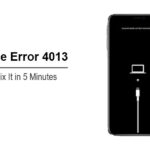Flexible working schedules have become an indispensable feature of modern workplaces, giving employees more control of their schedule while increasing productivity. Flextime Manager, an innovative software created to improve scheduling flexibility and simplify processes, is at the center of this change. But can this revolutionary change deliver on its promises of increased productivity or is it just another workplace trend that falls flat?
This blog post focuses on Flextime Manager’s benefits, features, and drawbacks that could be a problem for students and workers. We will discuss the weaknesses of the tool and examine how it could improve productivity and work-life balance. At the end of the article, you will know whether Flextime Manager is a worthwhile investment or simply an euphemism for your business.
What is a Flextime Manager?
A Flextime manager helps companies in managing flexible schedules for employees by tracking employees’ hours, which includes breaks and overtime. Managers can make flexible schedules that comply with labor laws within certain limitations. In addition, the tool keeps track of productivity and can be integrated with HR or payroll systems. Employees can meet company goals and still be flexible due to the flexibility tools.
These tools are ideal for businesses that don’t need the traditional 9-5 working hours. Furthermore, these tools could assist students in managing their work and study schedules by providing the flexibility to work around their academic schedules.
Also read: What is a Consultant Management System and Why Your Business Needs One
The Role of a Flextime Manager
Flextime Managers play an indispensable role in modern workplaces by overseeing flexible schedules, overseeing workforce coverage, and adhering to labor laws. Utilizing tools such as time tracking software, scheduling apps, and communication platforms, they help balance employee needs with business goals for optimal productivity, reduced absenteeism, and increased job satisfaction.
Ultimately contributing to improved productivity levels as remote and hybrid work models become ever more prevalent and people-centric work environments continue to emerge.
Key features of a Flextime Manager
Flextime Manager strives to help make scheduling, attendance, and job management more efficient and flexible. Here are some notable features:
- Flexible Work Hours: Workers or students are able to set flexible hours of study or work according to their schedules.
- Time Tracking: keeps track of the hours you’ve studied or worked to ensure proper efficiency and on-time completion.
- Attendance Management: tracks absences and attendance, and allows users to request and grant the use of leave.
- Task Prioritization aids people in organizing their tasks and setting objectives, which allows users to make use of their time more efficiently.
- Notifications and Reminders: It will send notifications and reminders to a person when there is an event, like deadlines and meetings, and study groups.
- Collaborative Features: This feature can assist study groups or teams in connecting to work together.
- Mobile Access: It is accessible via mobile devices, and users are able to use time management for work anywhere.
- Analytics & Reports: Offers comprehensive reports about how time is utilized, productivity, as well as attendance.
- Integration with calendars: Seamless integration with other calendars to accommodate personal, work, or academic occasions.
- Shift management (For employees): This feature handles the scheduling of shifts in order to allow workers to switch or change their shifts at a flexible time.
How to use Flextime Manager?
Here are a few tips to use FlexTime Manager tools efficiently:
- Set Specific goals: Choose what goals will be accomplished during the time frame that is flexible.
- Monitoring Time: Use Flex Time Manager’s features to keep track of working hours and detect patterns.
- Priority Use: Ensure all the necessary tasks are accomplished by establishing prioritization.
- Scheduling Break: Take a break frequently to keep your focus and to avoid burning out
- Monitor Progression: Observe progress regarding the deadlines and make any necessary modifications to your timetables.
- Create Boundaries: To ensure balancing your personal and professional time, set your hours of work.
- Review Performance: Analyze or report to analyze the duration of your use and adjust your plans according to the findings.
Also read: What is a Master Schedule? Key Benefits, Common Challenges, and How to Use It
Tools and Technologies for Flextime Managers
Flextime Managers need the appropriate technology and tools in their toolbox to be successful. Manual spreadsheets may quickly become overwhelming when managing multiple shifts, locations, and job roles across several locations and time zones – this is where automated scheduling software comes in, providing precision, efficiency, and visibility into workforce performance.
Automated Scheduling Software
Use Schedule App allows a Flextime Manager to easily create, modify, and share flexible work schedules with teams in real-time.
Real-Time Communication Tools
Instant messaging and push notifications allow employees to be instantly updated about schedule changes, shift swaps, or last-minute changes, helping reduce confusion and missed shifts.
Time Tracking Platforms
These integrated platforms let employees clock in and out digitally, giving the Flextime Manager accurate information for payroll processing and attendance tracking.
Workforce Analytics & Reporting
Smart dashboards enable managers to easily pinpoint trends related to absenteeism, overtime hours, and coverage gaps, giving actionable insight to help optimize staffing levels.
Modern technology equips Flextime Managers to go well beyond mere administrative duties. Equipped with features like AI-powered scheduling, shift swapping automation, and mobile alerts, managing a flexible workforce becomes far more strategic, scalable, and responsive, particularly in industries with unpredictable demand changes.
Ending Point
Flextime Managers ensure smooth and flexible scheduling that balances employee needs with business goals by employing modern tools for time tracking, communication, and analytics to reduce errors, boost productivity, and promote work-life balance – an indispensable role when overseeing today’s dynamic, remote or hybrid workforce efficiently and effectively.















Leave a comment